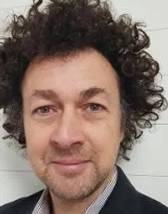Deradicalisation and Disengagement in Somalia: Evidence from a Rehabilitation Programme for Former Members of Al-Shabaab
This report examines efforts in Somalia to disengage and deradicalise former members of Al-Shabaab through the Serendi rehabilitation centre. This programme is designed to weaken the group's influence by providing an attractive alternative. The report analyses the programme's effectiveness and makes a case for exploring similar initiatives in other comparable environments.
Executive Summary
The Serendi rehabilitation centre in Mogadishu offers support to ‘low-risk’ former members of Al-Shabaab to prepare them for reintegration into the community, as part of the wider strategy of the Federal Government of Somalia and its international partners to counter the organisation. While certain challenges remain, between 2015 and 2018 Serendi was gradually converted into a functional centre in terms of its conditions and services offered. As such, the implementing team has now additionally been tasked with supporting both outreach (messaging campaigns to encourage additional disengagements from Al-Shabaab, as well as other related activities) and community reintegration of beneficiaries after leaving the centre.
This report presents detailed information about the Serendi programme, as well as wider empirical evidence drawn from interviews with 129 current and former residents on issues such as how and why they enlisted in Al-Shabaab in the first place, how and why they disengaged, and their experiences of reintegration post-exit. While closely related prison-based initiatives have become increasingly common over recent years in countries such as Indonesia, Nigeria, the Philippines, Saudi Arabia, Singapore and Yemen, Serendi-style semi-open residential rehabilitation centres for ‘low-risk’ former violent extremists remain comparatively rare. The authors of this report advocate for cautiously upscaling such efforts in Somalia, as well as exploring the possibilities to replicate this form of programming in other comparable environments.
WRITTEN BY
Dr James Khalil
Guest Contributor


